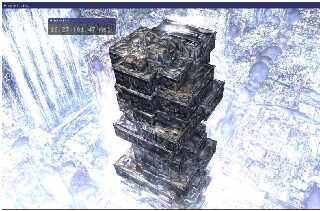|
 |
> There are no ellipsoids per say, but, you can easily make one by
> unevenly scaling a sphere, rotating it if needed, then translating it to
> the desired location. Create at the origin so that the scaling and
> rotation don't affect it's location, then move to the desired location.
>
> sphere{ 0, Radius scale <ScaleX, ScaleY, ScaleZ> rotate<XRotate,
> YRotate, ZRotate> translate Location}
> You can take many of those and bind them into an union so that they can
> be manipulated as a single entity.
>
> If you want a smooth transition between the ellipsoids, you can make
> them elements of a blob object.
Thank you for your prompt and insightful response.
3DGS model is actually a 3D structure generated by 3D reconstruction algorithm.
It consists of a group of solid Gaussian ellipsoids of different sizes. I want
to combine it with Pov-Ray to realize 3DGS ray tracing and solve problems such
as reillumination.3DGS model is characterized by a set of 3D Gaussian points,
which can be thought of as ellipsoids of varying sizes. These points are not
only used to represent the geometry of a 3D scene but are also equipped with
parameters that are crucial for Physically Based Rendering (PBR). Each Gaussian
point carries with it attributes such as opacity, view-dependent color, and now,
with our enhancements, normal vectors and Bidirectional Reflectance Distribution
Function (BRDF) parameters. This allows for a more realistic rendering of the
scene, as the materials' interaction with light can be modeled with greater
accuracy.But applying these parameters to Pov-ray seems to require solving some
interface problems
Harry
Post a reply to this message
Attachments:
Download '1.png' (1501 KB)
Preview of image '1.png'

|
 |




![]()